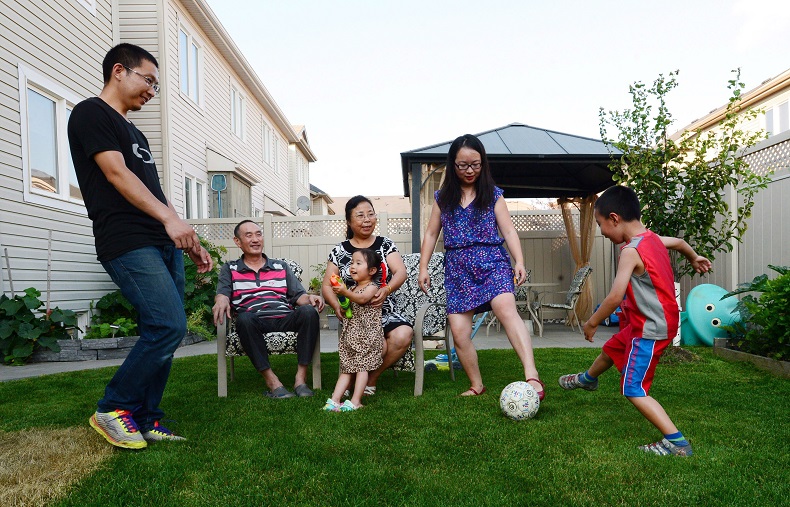The federal government is aiming to bring a total of 310,000 newcomers to Canada in 2018, it was revealed on Wednesday, with increases every year thereafter until 2020.

The plan reflects a new multi-year approach to immigration planning that experts say will allow for better preparation and integration.
By 2020, the yearly total will hit 340,000.
“Everyone has been of the opinion we need more workers, we need more skilled workers, we need more people to power our economy, address our real skills shortages, address our real labour market shortages and also address the regional nature of some of these requirements,” Immigration Minister Ahmed Hussen said Wednesday.
“So we’ve listened.”
The total for 2018 will still represent less than 1 per cent of Canada’s overall population. The greatest number of immigrants welcomed to the country in a single year remains just over 400,000, a record set in 1913.
The economic class, which includes people like caregivers, skilled labourers and professionals, is expected to continue to make up the biggest chunk, followed by the family class (parents, grandparents, children), then refugees and other humanitarian cases.
In 2017, the goal was to bring 300,000 new permanent residents to Canada, with nearly 58 per cent from the economic class.
The family class made up about 28 per cent of the overall target this year, while refugees and humanitarian cases accounted for another 14 per cent.

Get breaking National news
WATCH: Immigration Canada sends applicant another person’s personal file

Hussen recently said that 300,000 arrivals per year would become “the new normal” for Canada, which is struggling with an aging workforce and declining birthrate.
The number of working-age Canadians for every senior citizen is expected to drop from 4.2 in 2015 to 2.7 in 2030, according to the Department of Finance.
Still short of recommendations
Just over two years ago, the federal government’s economic advisory council — a group of external experts advising Finance Minister Bill Morneau — unveiled a series of recommendations that presented possible solutions: one of which was to boost immigration levels by 50 per cent (from 300,000 to 450,000 people annually) over the following five years.
The authors of a recent report from the Conference Board of Canada, however, argued that while 450,000 is both necessary and achievable, only hitting that number by 2025 would be best “given the low probability that the federal government would have the operational capacity to ramp up immigration that quickly.”
READ MORE: 450,000 immigrants a year? Canada could do it, report suggests
The Conservative opposition, meanwhile, already has serious concerns about the targets for 2018. Chief among them is Canada’s ability to settle and integrate the new arrivals, said Conservative immigration critic Michelle Rempel, especially given the influx of people crossing the Canada-U.S. border irregularly over the winter, spring and summer.
WATCH: Immigration Canada ‘breaking the law’ when denying some disabled applicants

Those refugees are processed in a separate stream from those applying for asylum from overseas, and make up only a small fraction of the overall immigration numbers. But Rempel noted that wait times at the Immigration and Refugee Board, which determines who is eligible to make a refugee claim, have lengthened considerably and the system is severely backlogged.
“(The prime minister) has no plan to support the integration of tens of thousands of refugees,” Rempel said during Question Period on Tuesday. “He’s also created massive wait times for everyone else who’s trying to enter Canada by playing by the rules.”
— With files from The Canadian Press








Comments